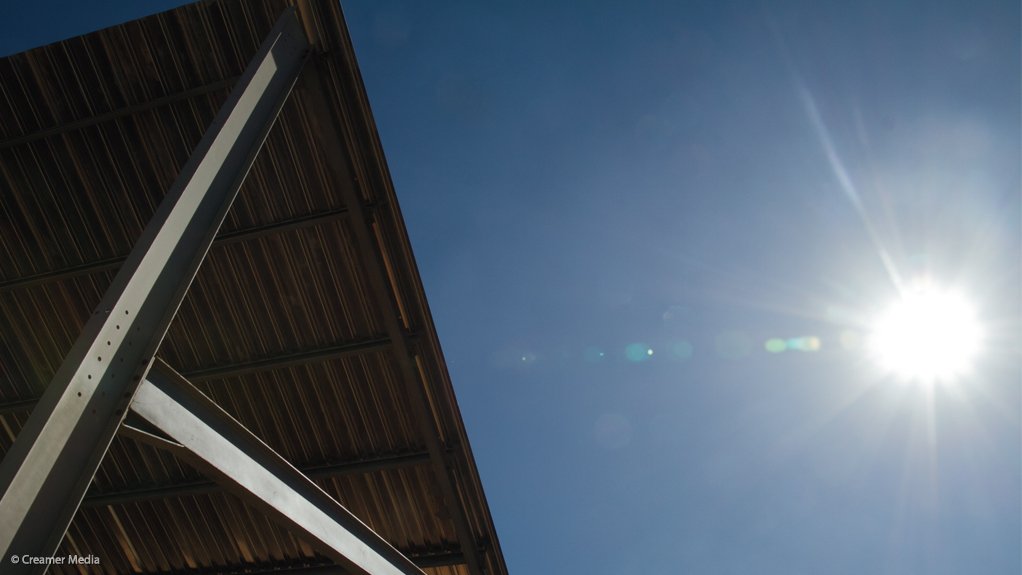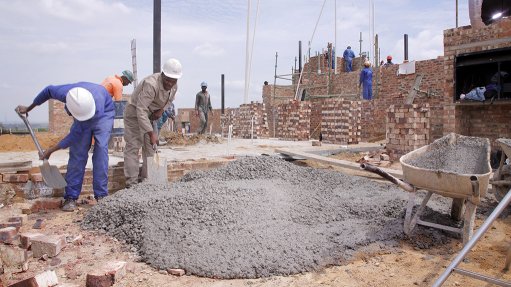Eskom plans six major power corridors ahead of decentralised capacity trend
The increasing decentralisation of electricity generation capacity in South Africa will require a new approach to grid planning that is underpinned by the development of six major power corridors linking the primary load centres in the centre of the country and along the KwaZulu-Natal coast with new sources of electricity generation in the south and far north of the country, the Institute for Security Studies (ISS) heard on Tuesday.
“While the main load centres will remain Gauteng and along the KZN coast . . . the greatest power pools will emerge in Limpopo, the Cape and east of Johannesburg.
“To move power to where it is required, we will need to build 13 000 MW and 7 000 MW transmission corridors between Limpopo and Gauteng, a 6 000 MW corridor between Gauteng and KZN, as well as three transmission corridors capable of transmitting between 5 000 MW and 6 000 MW between the Cape and the centre of the country,” parastatal Eskom transmission and grid planning chief engineer Kevin Leask indicated during a discussion on the long-term outlook of South Africa’s electricity sector.
He added that work on several of these transmission lines had already begun, while others were in the planning and environmental authorisation phase, remaining informed by the Integrated Resource Plan 2010 (IRP) – the country’s overarching energy strategy.
South Africa’s corridor strategy, Leask advanced, was informed by the 2040 Transmission Network Study, which was undertaken to determine the development requirements of the future transmission grid to accommodate the expected load demand needs and the potential impact of future generation scenarios, using the IRP as a baseline.
The study found that new energy generation, in the form of wind, coal, nuclear, gas and concentrated solar power, would increasingly be developed in the Cape and Limpopo, far removed from existing load centres, such as Johannesburg and Durban, which were expected to experience incremental load growth.
These findings were reinforced by a recent study by ISS African Future and Innovation researcher Steve Hedden, who asserted that grid planning should be incorporated in the early stages of capacity planning, particularly given the dramatic evolution and decentralisation of energy generation in South Africa.
“Most of our conversations around energy are focused on whose fault it is that we don’t have enough, which is not very helpful. The response to constraints on capacity is typically to increase capacity, which is not necessarily the whole story. It’s not just about capacity, but about how it is distributed and transmitted.
“Transmission is seldom included in energy planning from the beginning, but this is changing,” he said at the launch of the ‘Gridlocked’ report, at the ISS, in Pretoria.
He reiterated that, owing to the increasing prevalence of renewable energy and independent power producers, electricity production was becoming more decentralised and intermittent.
As forecast by the base case scenario of the 2013 update to the IRP, by 2040, Limpopo would be the largest net supplier of electricity owing to the planned expansion of coal-fired power plants, while increases in gas and renewable-energy capacity meant that all three Cape provinces would become net producers of electricity.
“This scenario does not include any increases in nuclear capacity or large increases in gas imports, which will, in all likelihood, further drive production in the Cape.
“As the 2013 IRP explains, new transmission infrastructure will be required to evacuate excess power out of the Cape,” read the ‘Gridlocked’ report.
Hedden further advised that any grid plans be integrated with other long-term strategies, such as the National Water Resource Strategy, to ensure policy alignment.
Commenting further on the increasing contribution of independent power producers (IPPs) in national energy supply, Leask rebuffed suggestions that Eskom had done little to enable the connection of IPP plants to the national electricity grid.
He pointed to the utility’s establishment of a Grid Access Unit and Single Buyers Office to facilitate the connection of IPPs to the grid and the subsequent buying of power.
He also referenced the publishing of the Grid Capacity Assessment document to guide stakeholders to areas on the national grid in which network capacity was available in relation to renewable-energy resources.
Eskom had also developed a “simpler, more efficient” connection application process for plants and had identified strategic transmission line routes to unlock network capacity to connect future IPPs.
“We have also introduced a self-build procedure document that provides IPPs the option to self-build their dedicated connection infrastructure and have a good indication of network requirements and costs required to integrate potential IPPs up to 2024 and beyond the last bid window of the Renewable Energy Independent Power Producer Procurement Programme,” Leask said.
Comments
Announcements
What's On
Subscribe to improve your user experience...
Option 1 (equivalent of R125 a month):
Receive a weekly copy of Creamer Media's Engineering News & Mining Weekly magazine
(print copy for those in South Africa and e-magazine for those outside of South Africa)
Receive daily email newsletters
Access to full search results
Access archive of magazine back copies
Access to Projects in Progress
Access to ONE Research Report of your choice in PDF format
Option 2 (equivalent of R375 a month):
All benefits from Option 1
PLUS
Access to Creamer Media's Research Channel Africa for ALL Research Reports, in PDF format, on various industrial and mining sectors
including Electricity; Water; Energy Transition; Hydrogen; Roads, Rail and Ports; Coal; Gold; Platinum; Battery Metals; etc.
Already a subscriber?
Forgotten your password?
Receive weekly copy of Creamer Media's Engineering News & Mining Weekly magazine (print copy for those in South Africa and e-magazine for those outside of South Africa)
➕
Recieve daily email newsletters
➕
Access to full search results
➕
Access archive of magazine back copies
➕
Access to Projects in Progress
➕
Access to ONE Research Report of your choice in PDF format
RESEARCH CHANNEL AFRICA
R4500 (equivalent of R375 a month)
SUBSCRIBEAll benefits from Option 1
➕
Access to Creamer Media's Research Channel Africa for ALL Research Reports on various industrial and mining sectors, in PDF format, including on:
Electricity
➕
Water
➕
Energy Transition
➕
Hydrogen
➕
Roads, Rail and Ports
➕
Coal
➕
Gold
➕
Platinum
➕
Battery Metals
➕
etc.
Receive all benefits from Option 1 or Option 2 delivered to numerous people at your company
➕
Multiple User names and Passwords for simultaneous log-ins
➕
Intranet integration access to all in your organisation





















